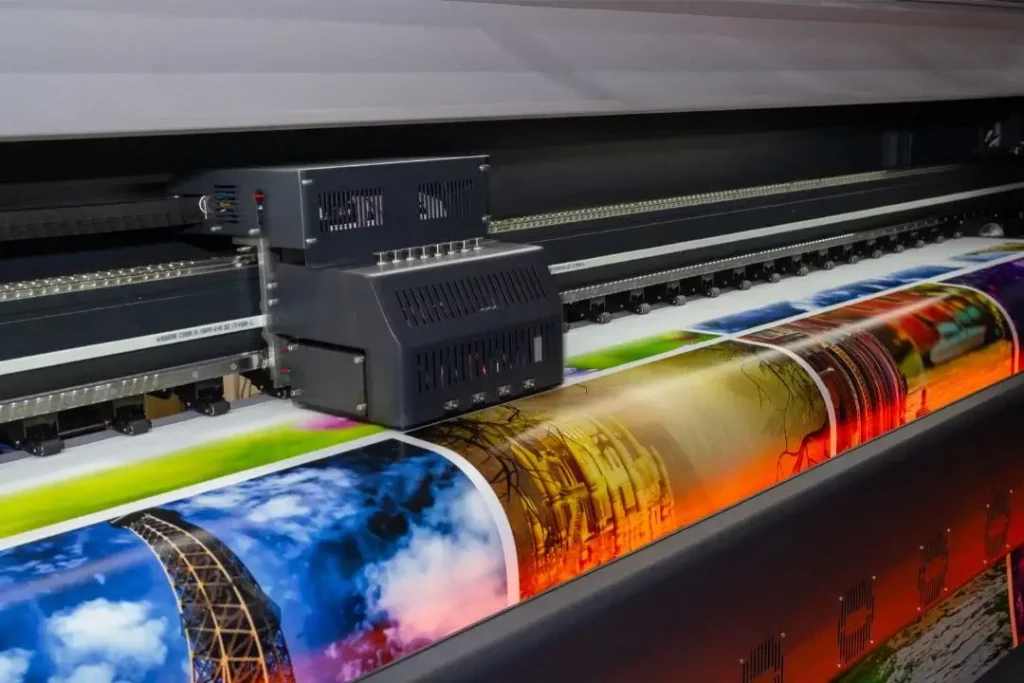
Why Clothing Brands Fail
Top Different Types of Shirts for Women and Men Top Different Types of Shirts for
Imagine walking into a room and catching everyone’s eye with a stunning, vividly colored t-shirt that seems to defy the laws of traditional printing. This is the power of dye sublimation printing, a cutting-edge technique that has revolutionized the world of custom apparel and textile design. With its incredible ability to create vibrant, long-lasting prints, dye sublimation has become a game-changer for both common people and clothing brands seeking to stand out from the competition.
In this blog post, we’ll explore the fascinating world of dye sublimation printing, delving into its unique process and advantages over other printing techniques. Whether you’re a casual enthusiast looking to create personalized items for your loved ones or a clothing brand seeking to elevate your designs, this comprehensive guide will give you the insights and knowledge you need to harness the incredible potential of sublimation printing. So let’s embark on this colorful journey together and discover the secret behind those vibrant, long-lasting prints that have captured our imagination.
Picture yourself holding a piece of fabric with a design so life like that the colors seem to dance and shimmer before your eyes. This enchanting effect is the result of dye sublimation, a printing method that has taken the creative world by storm. But what exactly is dye sublimation, and how does it weave its spell of vibrant, enduring colors?

At its core, dye sublimation is a printing technique that utilizes heat to transform solid ink particles into a gaseous state, bypassing the liquid phase entirely. This process, known as sublimation, allows the ink to penetrate deep into the fabric fibers, creating a permanent bond that results in incredibly vivid and long-lasting prints. Unlike traditional printing methods, which merely deposit ink on the surface, dye sublimination ensures that your designs become an integral part of the material, imbuing it with unparalleled vibrancy and resilience.
To truly appreciate the magic of sublimation dye printing, it’s essential to understand its intricate process. This fascinating technique consists of three critical components: ink types, transfer paper, and heat press. Let’s take a closer look at these elements and explore how they work together to create those awe-inspiring, vivid prints.
The secret behind die sublimation vibrant colors lies in the specialized inks used in the process. Unlike traditional inks, sublimation inks are specifically formulated to convert from a solid state to a gas when exposed to heat. This unique property allows the ink to penetrate the fabric fibers, resulting in a permanent and brilliant print. Sublimation inks are typically available in four primary colors (cyan, magenta, yellow, and black), which can be mixed to produce a vast array of shades and hues.
The next essential component in the dye sublimation process is the transfer paper. This specially coated paper serves as the medium for transferring your design onto the fabric. The artwork is first printed onto the transfer paper using a dye sublimation printer and specialized inks. The paper’s unique coating ensures that the ink stays in place and is released evenly when subjected to heat, ensuring a crisp, sharp transfer of the design onto the fabric.
The final step in the dye sublimation print process is the application of heat and pressure using a heat press. This specialized equipment is designed to maintain a consistent temperature and pressure, ensuring a uniform transfer of the ink onto the fabric. When the heat press is applied, the ink on the transfer paper turns into a gas, penetrating the fibers of the fabric and creating a permanent bond.
Dye sublimation printing is known for producing exceptionally vibrant colors. The inks penetrate the fabric fibers, resulting in bright prints that display remarkable depth and richness. This makes dye sublimation an ideal choice for creating eye-catching designs that truly stand out from the competition.
Another advantage of dye sublimation is the longevity of the prints. Since the inks form a permanent bond with the fabric fibers, the designs are more resistant to fading, cracking, or peeling compared to other printing techniques. This ensures that the prints maintain their original appearance even after multiple washes, providing lasting value for both consumers and clothing brands.
Dye sub printing is an environmentally friendly printing process. The inks used are water-based and contain no harmful chemicals, reducing the potential for environmental pollution. Additionally, minimal waste is generated during production since the designs are printed directly onto the fabric. This makes dye sublimation an attractive option for businesses and individuals who prioritize sustainability and eco-friendliness in their products.
Dye sublimation printers come in various sizes and capabilities, from small desktop models to large-format industrial machines. Some popular options include inkjet printers designed specifically for sublimation and specialized devices like dye-sublimation photo printers.

When selecting a dye sublimation printer, consider print quality, speed, size, and budget factors. Evaluate your specific printing needs, the volume of production, and the types of materials you plan to work with to determine the most suitable option for your business or personal projects.
High-quality sublimation inks and effective color management are essential for achieving accurate and consistent results. Selecting the right ink type for your printer and regularly calibrating your devices can help ensure vibrant and true-to-life colors in your dye sublimation prints.
A reliable heat press is vital for successful dye-sublimation printing. There are various types of heat presses available, including clamshell, swing-away, and draw-style models. Factors to consider when choosing a heat press include the size of the items you plan to print, temperature and pressure control, and ease of use.
Selecting the right transfer paper is crucial for achieving sharp, high-quality prints. Look for papers specifically designed for dye sublimated printing, as they have a unique coating that allows for even ink release when subjected to heat. Consider the weight, drying time, and compatibility with your printer when selecting the most suitable transfer paper for your projects.
To achieve the best results in sublimation printing, preparing your artwork correctly is crucial. Ensure that the design is in a high-resolution format, typically 300 dpi or higher, and that the colors are adjusted for the specific sublimation inks you use. Remember to mirror your design before printing, as it will be reversed during the transfer process.
Accurate color management is essential for consistent and vibrant prints. Calibrate your printer regularly, and use the correct ICC profiles for your specific printer, ink, and transfer paper combination. This will help you achieve more precise color reproduction and avoid unexpected color shifts.
Common issues in dye sublimation printing include color bleeding, ghosting, and uneven ink transfer. To minimize these problems, ensure that your heat press maintains consistent temperature and pressure and that the transfer paper is properly aligned with the substrate. Also, make sure to use high-quality inks and papers specifically designed for sublimation printing.
To optimize your dye sublimation printing process, focus on streamlining your workflow and maintaining high-quality standards. Organize your workspace to maximize efficiency, and regularly maintain and clean your equipment to ensure optimal performance. Furthermore, establish a thorough quality control process to catch any issues before they reach your customers or end-users.
If you want to learn more about dye sublimation printing click here.
In conclusion, dye sublimation printing offers numerous advantages over traditional printing methods, such as vibrant colors, long-lasting prints, and eco-friendliness. This versatile printing technique is ideal for creating eye-catching designs on various materials and is highly valued in the clothing industry. If you want to level up your printing game, we encourage you to explore and experiment with dye sublimation. With the right technical tools and techniques, you can unlock the full potential of this innovative printing method. Now, it’s the perfect time to dive into the world of sublimation printing and stay ahead of the curve in this rapidly evolving field.
To perform sublimation printing, you need a specialized dye sublimation printer, sublimation inks, transfer paper, a heat press, and the substrate (material to be printed on).
The cost of sublimation printing varies depending on factors such as the printer and ink used, the number of prints, and the substrate material. However, compared to traditional printing methods, dye sublimation printing is often more cost effective for smaller quantities and complex designs.
A sublimation printer is used for sublimation printing, a process that transfers dye onto materials such as fabric, ceramics, or metals using heat. Sublimation printers are designed to print with specialized sublimation inks and transfer paper.
Dye sublimation ink is a specialized ink that is designed for use in the sublimation printing process. It contains dyes that can be transferred to a substrate through heat and pressure, resulting in vibrant, long-lasting prints.
A dye sublimation printer is a specialized printer designed to print with sublimation inks onto transfer paper. The printed transfer is then placed onto the substrate and subjected to high heat and pressure, causing the ink to sublimate and transfer onto the material, resulting in vibrant, long-lasting prints.
Dye sublimation printing offers vibrant colors and long-lasting prints and is eco-friendly. It also allows for intricate designs and is ideal for smaller quantities.
Dye sublimation produces more vivid colors and sharper details than screen printing, making it a better option for intricate designs and smaller quantities.
Yes, sublimation printing can be done at home with the right equipment and materials.
No, dye sublimation printers require specialized ink that is designed for the sublimation process.
Expert Custom Clothing Manufcaturer

Top Different Types of Shirts for Women and Men Top Different Types of Shirts for

What You Must Know About Clothing Samples? Before You Produce a Single Garment: What You

How Much Does It Cost To Make a Hoodie A Complete Cost Breakdown for Custom

Discover the Types of Buttons Discover the Types of Buttons That Transform Style and Functionality
Most Recent Posts
Expert Custom Clothing Manufcaturer
Join our Mailing list!
Get all latest news, exclusive deals and updates.